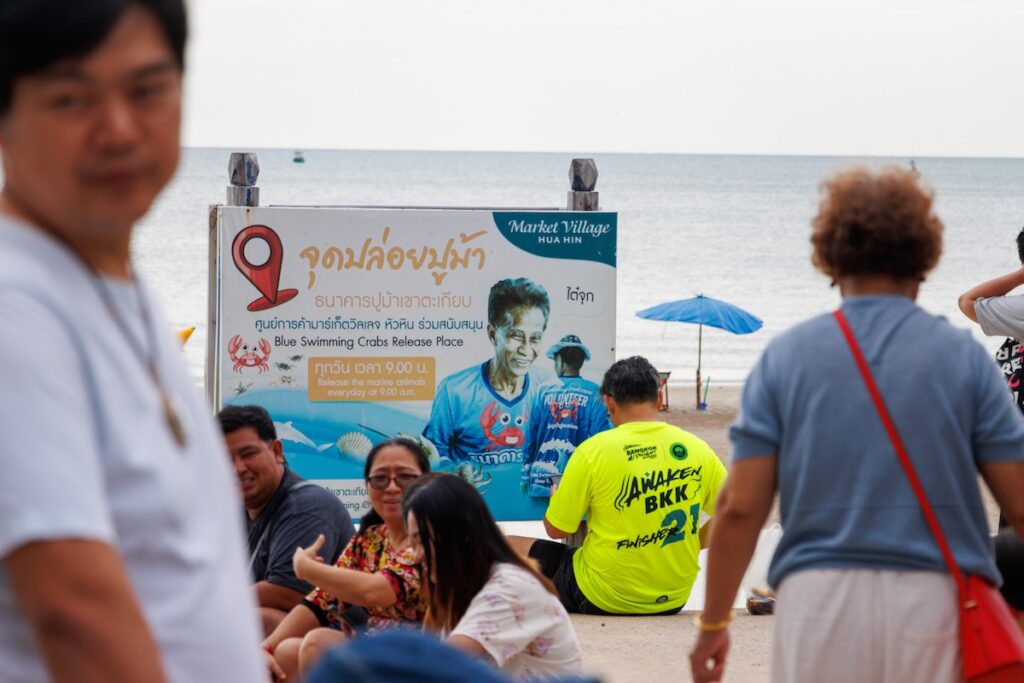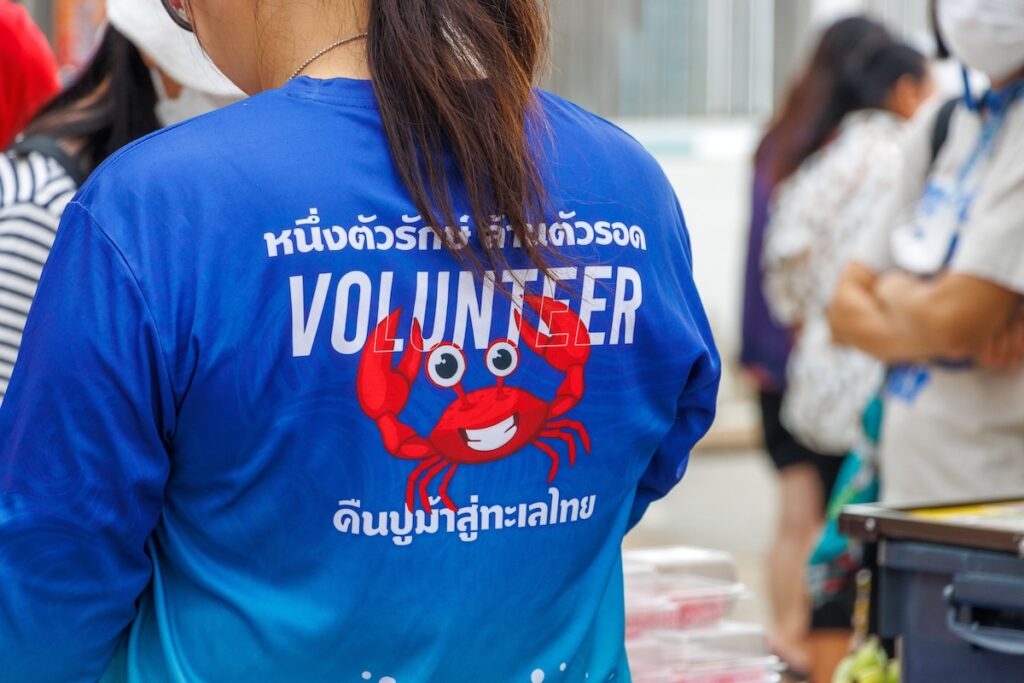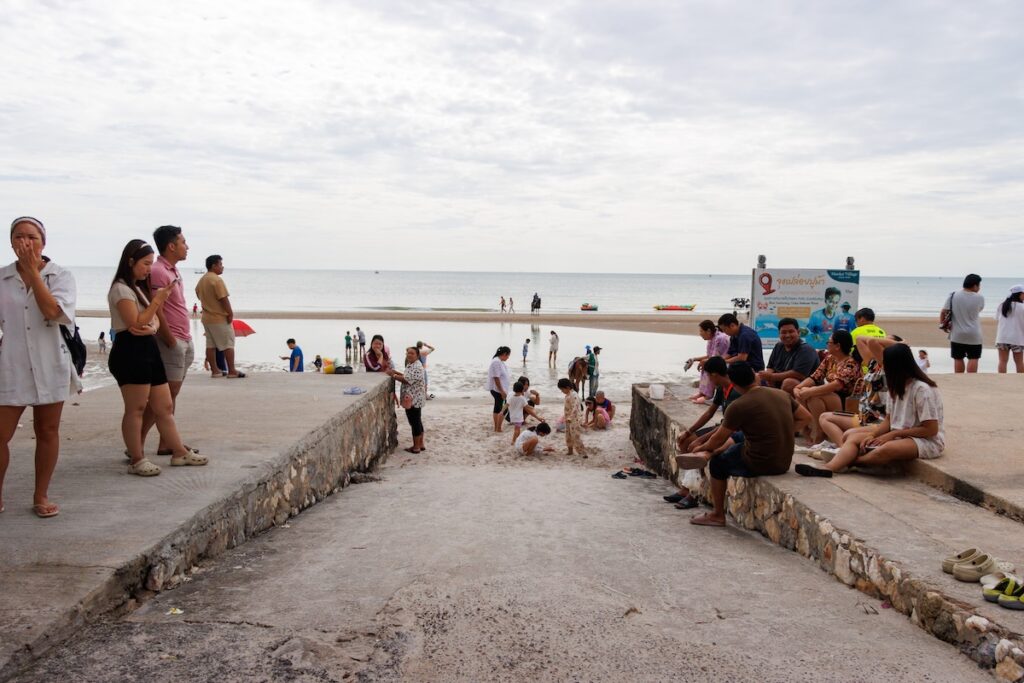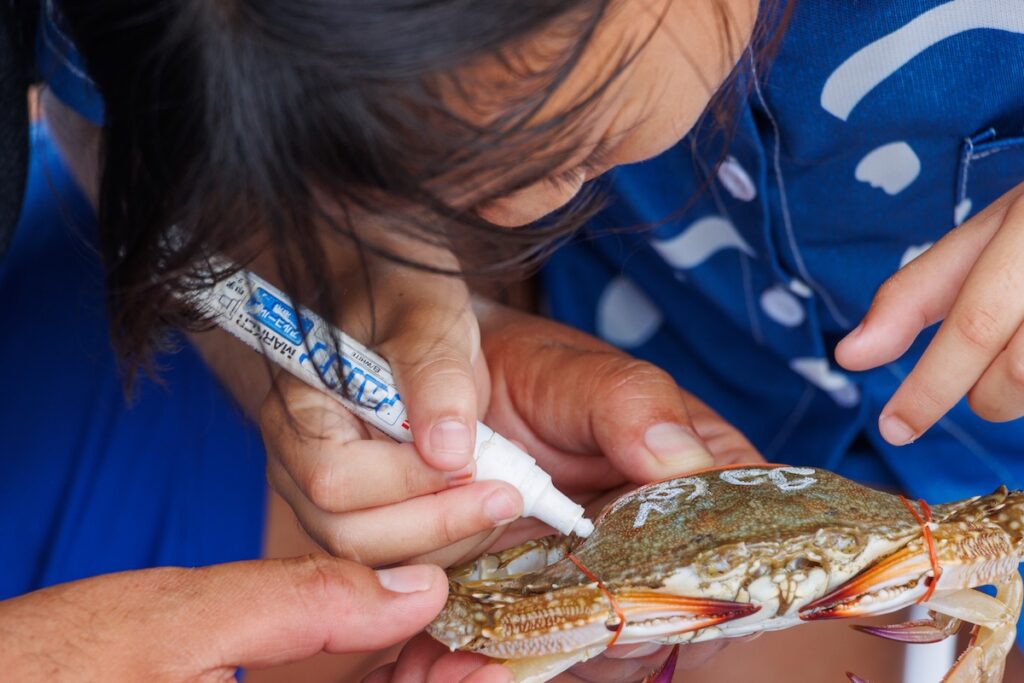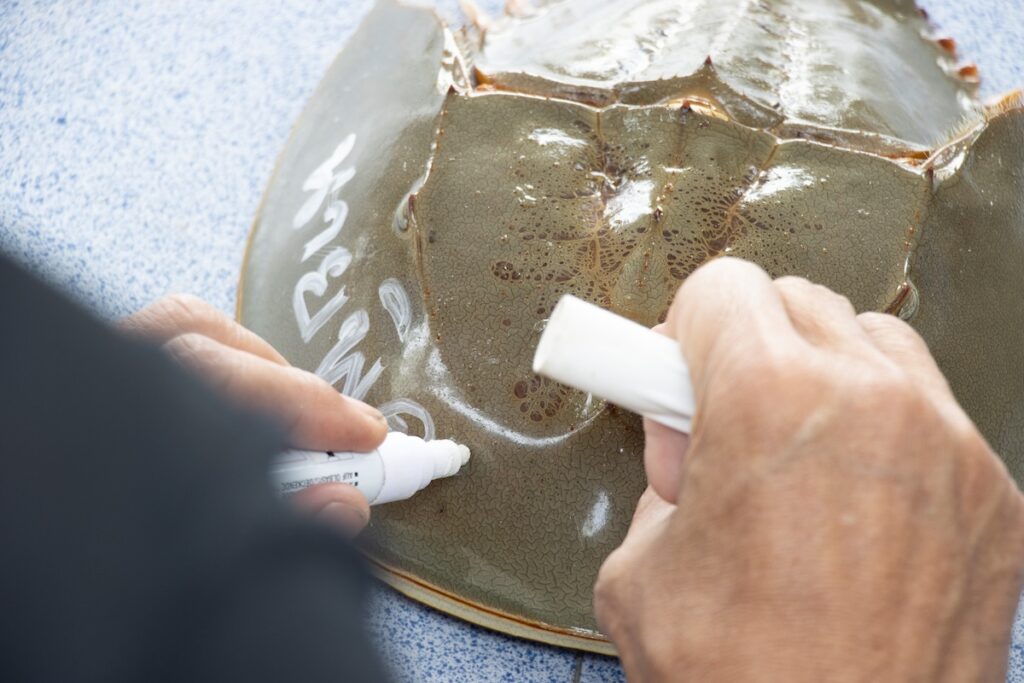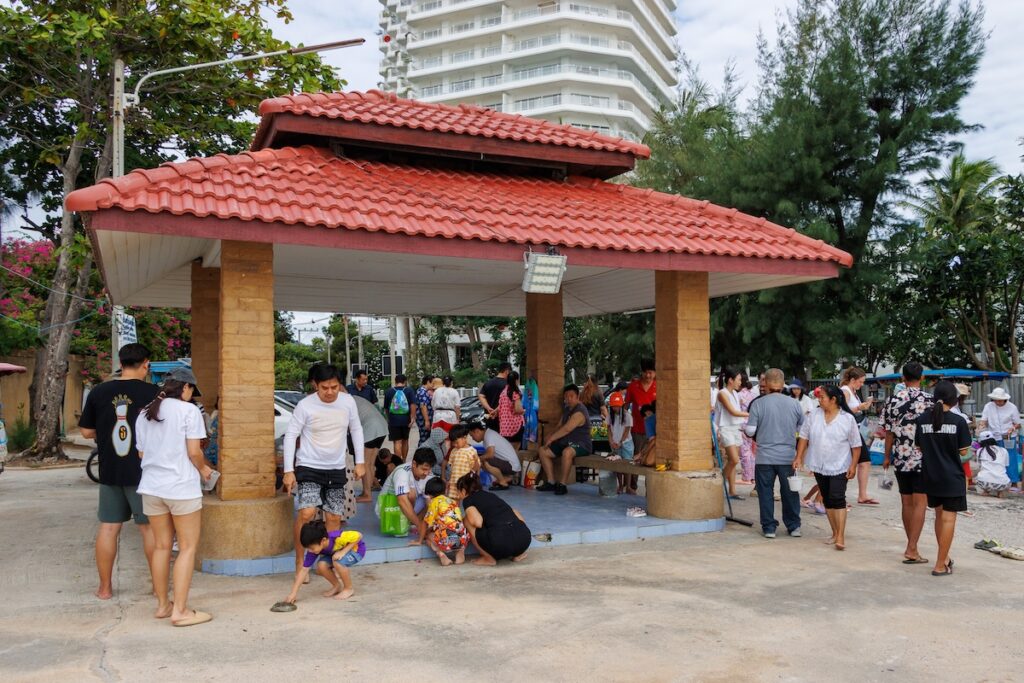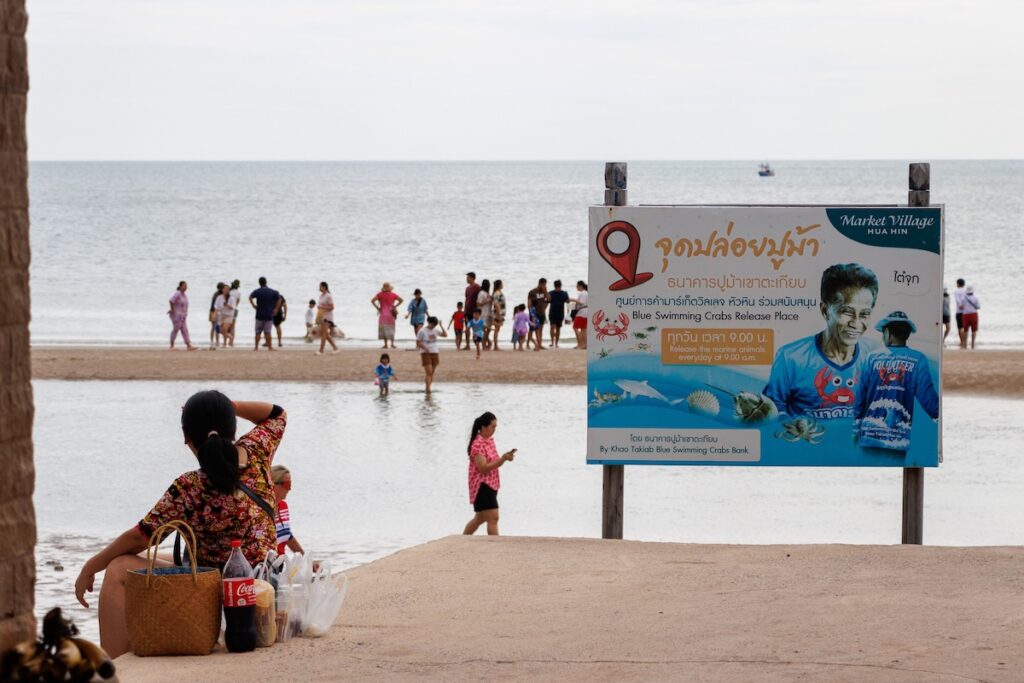Visitors to Hua Hin can take part in a free daily activity that supports marine conservation and offers a meaningful outdoor experience for families and children.
Every morning at 9 a.m., the Hua Hin Crab Bank invites the public to help release juvenile blue swimming crabs and other marine animals back into the sea. The activity takes place at the end of Khao Takiab Soi 1, near the octagonal pavilion, and is open to all at no cost.
Although small in scale, the initiative plays a significant role in helping to restore marine biodiversity in the Gulf of Thailand. By supporting the release of young crabs and other sea creatures, the activity helps rebuild breeding grounds and ensures more sustainable catches for local fishers throughout the year. This in turn benefits nearby seafood restaurants and markets, while helping to maintain the balance of the coastal ecosystem.
What is the Hua Hin crab release?
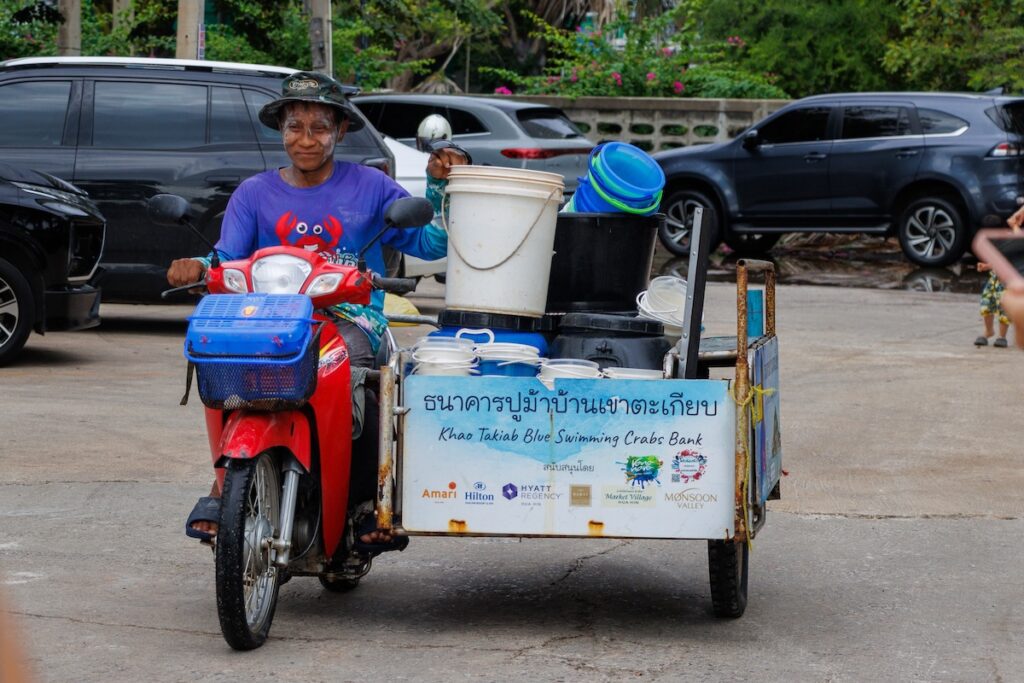
Volunteer caretaker Sakchai Thonghiang, widely known as “Tai Chuk.
Organised by the Khao Takiab Blue Crab Bank, the activity is rooted in a royal initiative launched during the reign of King Rama IX to protect and replenish populations of blue swimming crabs—a species considered both economically and ecologically important in Thailand. The Department of Fisheries has supported the creation of crab banks around the country, where egg-carrying female crabs are brought in to lay their eggs in controlled tanks before the crabs are sold. Their eggs are then nurtured into larvae and later released into the sea to help rebuild stocks.
Volunteer caretaker Sakchai Thonghiang, widely known as “Tai Chuk,” has overseen the Khao Takiab Crab Bank for more than a decade. Working with local fishers and restaurant owners, Tai Chuk also helps rehabilitate marine animals that are injured, underdeveloped, or unsuitable for sale. These animals are either nursed back to health or allowed to reproduce, after which their offspring are released into the wild.
Each morning, the event begins with a short introduction about the purpose of the Crab Bank and guidance on how to safely release the animals. Participants are then invited to release baby blue swimming crabs—barely visible to the naked eye—using small buckets provided by organisers. The crabs are gently poured into shallow water close to the shore, where they stand a better chance of survival.
Other marine creatures, including larger crabs and molluscs, should be released in deeper water—ideally at knee height or further out—to ensure they do not become stranded in the sand. Organisers advise adults to supervise children closely, as some marine animals may be unwell or unsuitable for handling.
What to expect when you take part
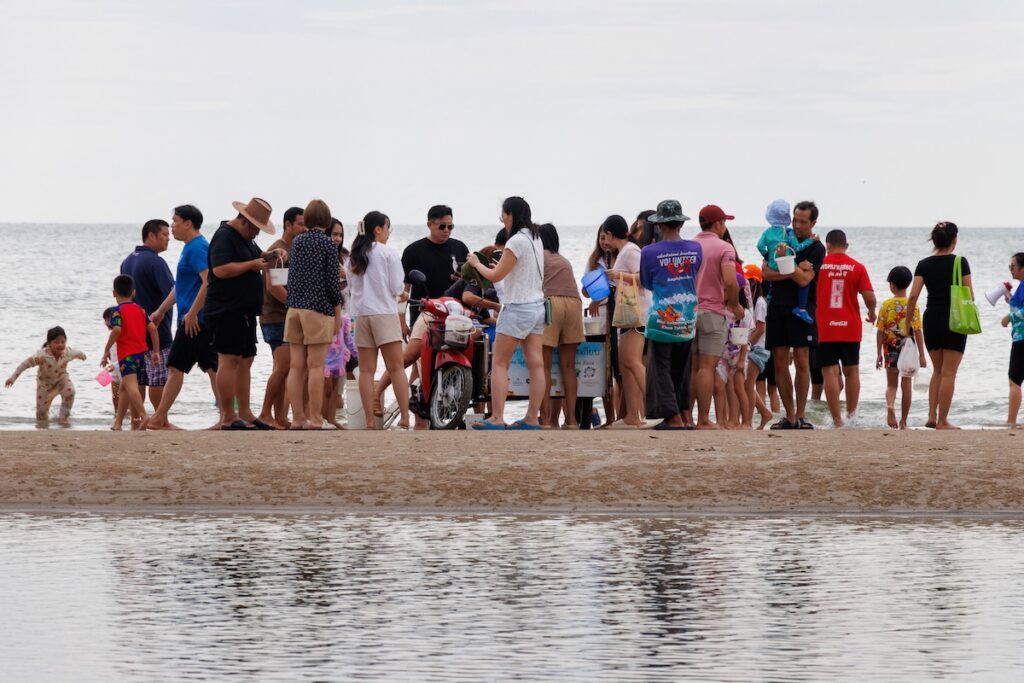
Families taking part can also join a symbolic local tradition: using special markers to write their name or draw a simple image on the shell of a marine animal before release. The practice, approved by the Department of Fisheries, adds a personal touch to the conservation effort and is especially popular with young participants. Pens are provided, and instructions are given to avoid harming the animals—particularly sensitive areas such as the eyes.
A single female crab can carry between 300,000 and one million eggs. In the wild, only a small percentage survive to adulthood. By hatching the eggs in tanks and releasing the larvae once they reach the early Zoea stage, the Crab Bank greatly improves their chances of survival.
The crab release event is one of the few daily eco-tourism activities in Hua Hin and provides an engaging way for tourists and residents to learn about marine life, sustainability, and the importance of protecting natural resources. It is suitable for all ages and does not require advance registration.
Those wishing to join should arrive shortly before 9 a.m. to hear the morning briefing. The Hua Hin Crab Bank is located at the end of Khao Takiab Soi 1, just a short walk from the beach.
📍 https://maps.app.goo.gl/mpYBUVe67K7BaY148
